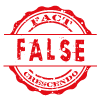
Social media users Tertiary-butyl hydroquinone (TBHQ), commonly used as a preservative in products like ramen noodles is a synthetic compound also found in industrial products such as lacquers and pesticides. It is claimed to be indigestible and potentially harmful, as high doses in lab studies have been linked to tumors and DNA damage in rats.
However, Fact Crescendo found the claim to be misleading. Although there are health concerns with high dose intake of THBQ, but food safety organizations declared it as safe when consumed within acceptable daily intake value.
Fact Check-
What is TBHQ?
Tertiary butylhydroquinone, or TBHQ, is an additive to preserve processed foods. It acts as an antioxidant which protects foods with iron from discoloration. It is used to extend shelf life and prevent rancidity of the products.
Is it a Petroleum based product?
The patent CN103864579A describes a method for synthesizing crude Tertiary Butyl Hydroquinone (TBHQ) with high purity (up to 99.5%). The process involves mixing hydroquinone with phosphoric acid and water, followed by adding tert-butyl alcohol in a reaction vessel. The mixture is heated to specific temperatures (55–85°C) to facilitate the reaction, then the product is isolated through centrifugal separation, washing, and dehydration. Unlike traditional methods that use toluene as a solvent, this process uses water, reducing pollution and improving raw material utilization.
TBHQ itself is not directly extracted from petroleum but substance used for its production like hydroquinone and tert-butyl alcohol, are often derived from petroleum-related processes. Therefore, TBHQ can be considered indirectly linked to petroleum-derived products.
Is TBHQ approved?
The EFSA Panel reviewed the safety of TBHQ (E 319), a food additive allowed in the EU with a safe daily intake limit of 0.7 mg per kilogram of body weight. While past assessments found that adult exposure stayed within this limit, there was concern that infants consuming infant formula with TBHQ might exceed the limit. To refine the assessment, EFSA analyzed new data on how much TBHQ is used in foods and how much people actually consume. The results showed that, at maximum allowed levels, toddlers and children could exceed the safe limit. However, in more realistic scenarios, the safe limit was not exceeded for any group.
FDA approved TBHQ as a food additive and set specific conditions for its safe use. As per FDA, TBHQ must have a melting point of at least 126.5°C and be at least 99% pure. It should be used as an antioxidant, either alone or with BHA and BHT, to prevent oxidation in foods and the total amount of antioxidants, including TBHQ, in a food must not exceed 0.02% of the fat or oil content in the food.
According to the National Library of Medicine, TBHQ is a synthetic antioxidant and antimicrobial used in food, pharmaceutical, and cosmetic industries in approved amounts. It does not significantly accumulate in the body but can cause health issues, such as nutritional disorders, chronic diseases, and cancer, when consumed in high doses or over a long time. TBHQ can trigger inflammation, oxidative stress, and cellular damage. Therefore, it is recommended to strictly follow the usage limits in food. There are reports on therapeutic benefits of TBHQ under certain conditions but there is no clear data on how much TBHQ people can consume from all food sources. To minimize risks, it is recommended to use only approved amounts of TBHQ in food products.
Conclusion:
Fact Crescendo found the claim to be misleading. Although, it is true that TBHQ can cause health issues but according to food safety regulatory bodies, it is safe when consumed within approved quantity.

Title:Health Concerns of TBHQ in Ramen Noodles – Food Safety organizations said it is safe when consumed within approved limit.
Written By: Siddharth SahuResult: False


